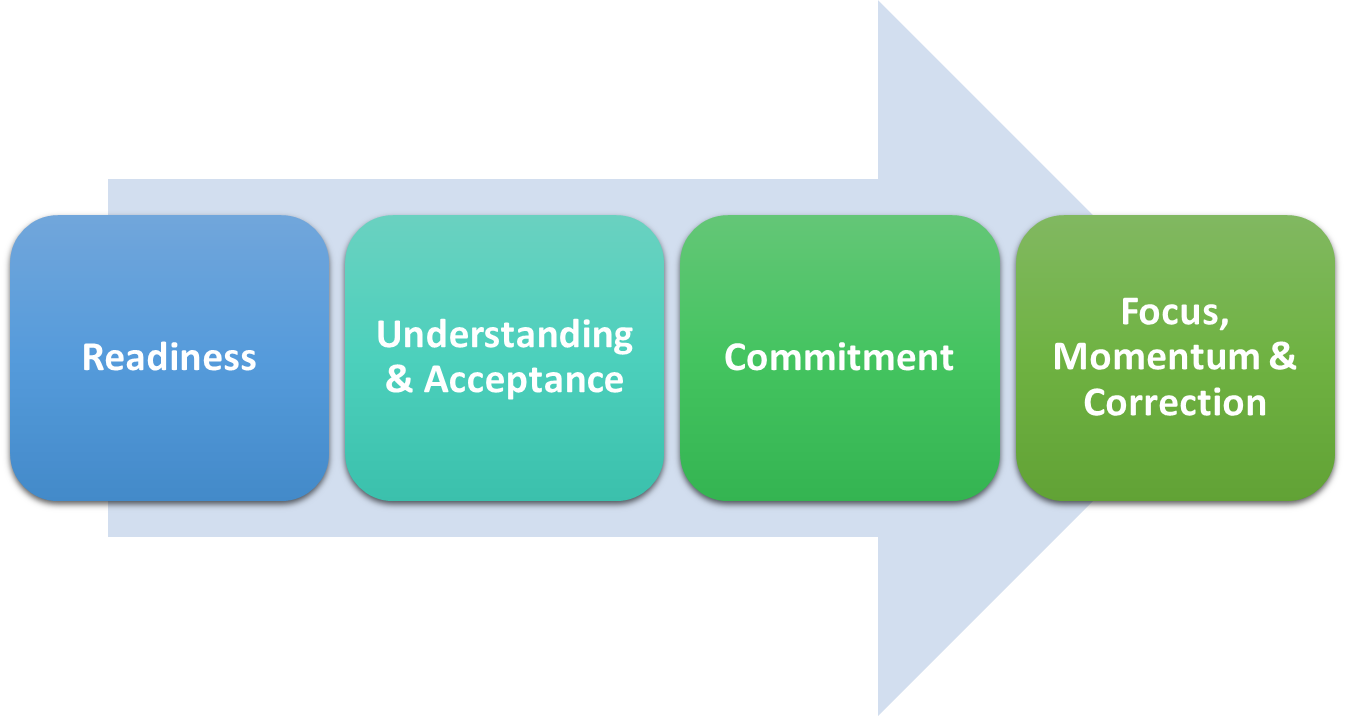7 Applying Systems Thinking
Four-State Process for Applying Systems Thinking
Stroh provides a four-stage change process of leading systemic change by applying systems thinking. You will see similarities between this process and Design Thinking, which is the focus of the next section.

- Readiness: Building a foundation for change by engaging critical stakeholders and collaborators
- Understanding and Acceptance: Facing and understanding the current situation at all levels of the iceberg
- Commitment: Making an explicit choice for change and clarifying the aspirational vision
- Focus, momentum, and correction: Bridging the gap between the current situation to the preferred one by engaging a diversity of stakeholders, focusing on high-level interventions, and learning from the experience
By applying this process, system thinking has the capacity to revolutionize community change by:
- Motivating people by situating them within the problem as well as the solution
- Catalyzing collaboration due to the insights that are gained
- Focusing efforts on those with the most impact and sustainability
- Stimulating continuous learning by building feedback loops into the process, acknowledging that knowledge is not static and neither are the solutions [1]
- Stroh, D.P. (2015). Systems thinking for social change: A practical guide to solving complex problems, avoiding unintended consequences, and achieving lasting results. White River Junction, Vermont: Chelsea Green Publishing. ↵